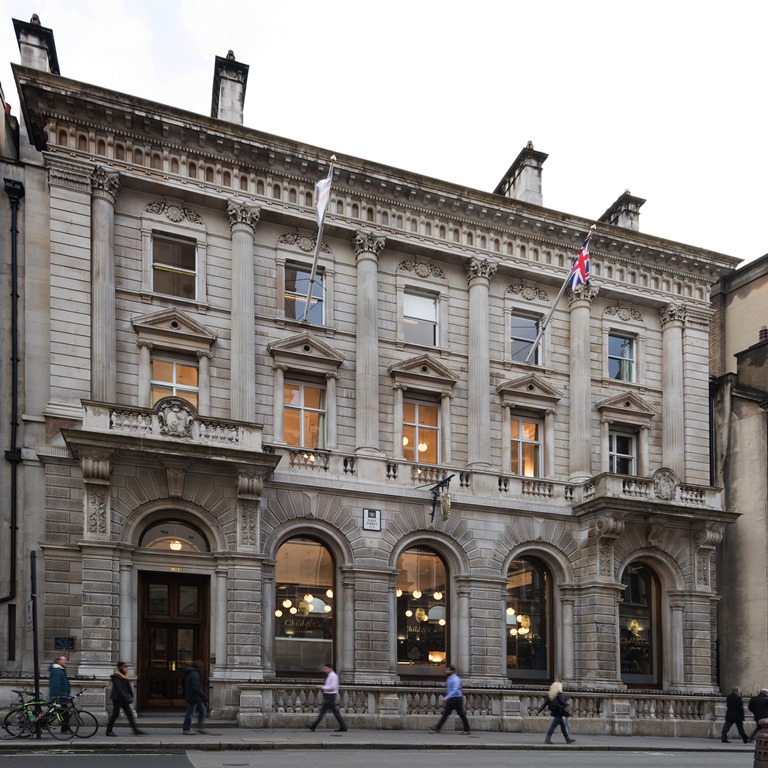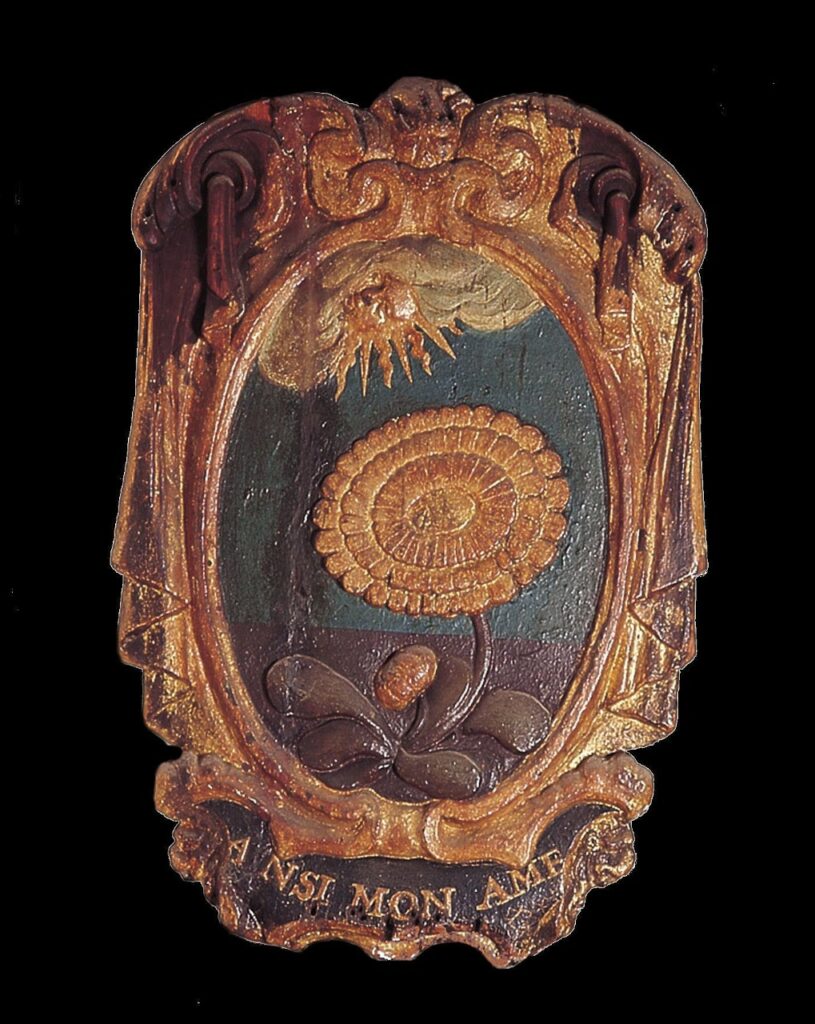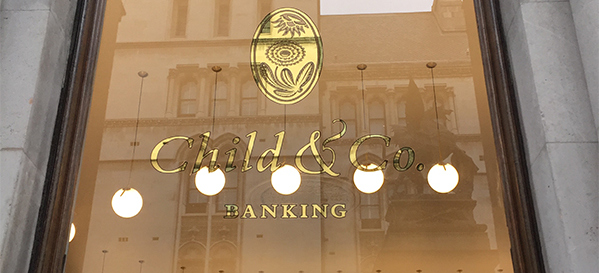1 Fleet Street, EC4
Built: 1878-1880
Architect: John Gibson (1817-1892)
Listing: Grade II* (1970)

Sir Francis Child joined Robert Blanchard’s firm in the 1660s and moved their operations to this location by 1673, eventually taking over the company and renaming it after himself. Like most bankers of the era, he began as a goldsmith and eventually moved into deposit-taking and personal lending. The original premises were in simple, three-bay brick houses of the sort that made up much of the City after the Great Fire but after the roadbed was widened (and Temple Bar removed) Child & Co bought adjoining premises and had this more ambitious building erected, under the direction of prominent architect John Gibson.

The organisation and subdivision of this façade is admirably simple, yet elegant. The ground floor consists of a series of arches, containing windows or doorways, with rusticated voussoirs and pilasters, in a simple Tuscan style that is echoed by the smaller columns that brace each window. The two upper storeys, by contrast, feature channelled ashlar beneath a screen of six fluted Corinthian columns, with a full entablature. The only quirk there is a rather curious frieze of repeating mini-arched niches. The two lateral bays, which contain the entrances, also sport balustraded balconies and finely carved consoles. Upon the balconies are escutcheons with the long-standing sign associated with this bank: a marigold beneath the sun. Before numerical addresses, Child & Co was known as being “at the sign of the marigold within Temple bar”. Such a sign endures in RBS’ heritage collection.

This is a building of outstanding symmetry and clarity as well as very delicately balanced scale, though thoroughly renovated in its interiors. Judging from late 19th century photos in RIBA’s archive, the exterior is virtually unchanged since 1880. Child & Co was sold to Glyn Mills in 1923 but continued to trade under its own name. It partly still does, having been taken over by RBS at a later date.
